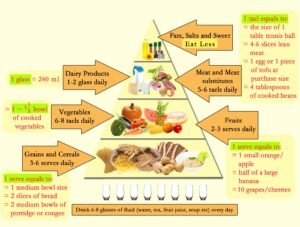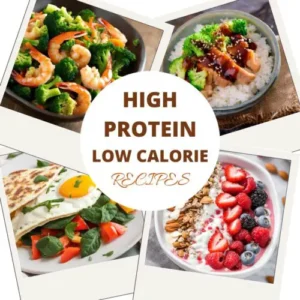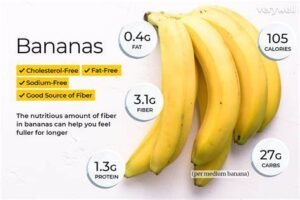Best Food for Trekking
Hey there, fellow trail enthusiast! You might think that any food you can stuff into your backpack is suitable for trekking, right? Well, not quite. While it’s tempting to pack anything at hand, choosing the best food for trekking is more about strategy than convenience.
Trekking is not just a physical challenge; it’s a test of how well you can sustain your energy through the right foods. So, before you throw in those candy bars for an easy sugar rush, let’s talk about why the right snacks can make or break your hiking experience.
Why Nutritious Trekking Snacks are Crucial
When you’re out on the trails, every ounce you carry and every calorie you consume counts. Opting for nutritious trekking snacks isn’t just about curbing hunger; it’s about fueling your body efficiently and effectively for the long haul.
Trekking demands a lot from your body—climbing slopes, navigating tricky paths, and maybe even battling the weather. Your muscles need high-quality fuel to function, especially when you’re miles from the nearest cafe or convenience store.
Nutritious trekking snacks (Best food for trekking)
These are your secret weapon. They pack a powerful punch of energy, without the extra weight or bulk. For example, foods high in protein and good fats can keep your energy levels steady and prevent the spikes and crashes often associated with high-sugar snacks.
This is crucial when you’re trekking because a sudden drop in energy can mean the difference between enjoying your hike and struggling to make the next mile.
Click to see another blog
Benefits of snacks (Best food for Trekking)
Moreover, these snacks are not just about energy. They are essential for muscle recovery. Imagine spending a whole day walking, climbing, and carrying a backpack. Your muscles are going to be sore. Protein-rich snacks like nuts, seeds, and jerky support muscle repair, helping you wake up feeling ready for another day of adventure, rather than stiff and achy.
And let’s not forget hydration—often overlooked yet vital. Many nutritious snacks, particularly fruits like apples and oranges, contain significant amounts of water in addition to electrolytes, which help in maintaining fluid balance and preventing dehydration.
So, next time you pack, think about what you’re putting in your body, not just your backpack. Choosing the right trekking snacks can enhance your stamina, keep your spirits high, and help you enjoy the beautiful vistas without huffing and puffing too hard.
In our next section, we’ll dive into exactly what types of food you should consider for your hiking adventures, ensuring every step you take is powered by the best fuel possible. Stay tuned and get ready to transform your trekking meals into power meals!
The Best High-Energy Foods for Your Hiking Adventures
There’s a common misconception that when it comes to trekking, more calories mean more energy. But it’s not just about quantity; it’s about the quality of those calories that can make a real difference. High-energy foods for your hiking adventures need to be more than just filling—they should be nutrient-dense and quick to convert into usable energy.
What should you pack? Let’s dive into some of the best options that are not only light to carry but also high in energy:

- Nuts and Seeds: Almonds, walnuts, and sunflower seeds are not just crunchy and satisfying; they’re also packed with essential fats, proteins, and calories. Just a handful can help you push through a tough part of your trek.
- Whole Grains: Foods like whole-grain crackers, granola, and oatmeal offer sustained energy because they are rich in fiber, which helps maintain blood sugar levels over a longer period.
- Dried Fruit: Apricots, raisins, and dates are sweet sources of quick energy. They are high in natural sugars, which provide a rapid energy boost.
- Energy Bars: Choose bars that contain a mix of nuts, seeds, and fruits, and watch out for those with too much added sugar.
- Dark Chocolate: For a quick pick-me-up that feels like a treat, a small piece of dark chocolate can offer a burst of caffeine and morale.

Each of these options packs a punch in terms of calories and nutrients, and they’re perfect for when you need that extra energy to continue exploring the great outdoors.
Click to see an other blog
Hydration on the Trail: What You Need to Know
Water might not be what comes to mind when you think of best food for trekking. But proper hydration is one of the most critical components of any successful hiking trip. It’s easy to focus only on solid food, but neglecting your water intake can lead to dehydration, which is a trekker’s worst enemy.
- Why Hydration is Crucial: When you’re hiking, you’re sweating, even if you don’t feel it, especially in cooler weather. Sweat not only drains water but also essential salts and minerals. Proper hydration helps maintain your stamina and concentration, which are crucial for safe trekking.
- What to Drink: Plain water is king, but for longer treks or during high exertion, consider hydration supplements like electrolyte powders or tablets that you can add to your water. These can replenish essential minerals lost through sweat and help prevent cramps.
- How Much to Drink: A general rule is to drink about half a liter of water per hour of moderate activity in moderate temperatures. However, this can vary based on your individual needs, weather conditions, and your activity level.
- Innovative Solutions for Carrying Water: Hydration packs are a trekker’s best friend because they allow easy access to water without having to stop and dig out a water bottle. They also help distribute the weight more evenly than bottles.
Keeping these hydration tips in mind can make a significant difference in your comfort and energy levels on the trail. It’s not just about quenching your thirst; it’s about fueling the adventure ahead.
Special Diet Considerations: Vegan and Gluten-Free Options
You might think that being on a vegan or gluten-free diet limits your trekking food options, but this couldn’t be further from the truth. With a little planning, you can enjoy a variety of nutritious and tasty foods that fit your dietary needs without sacrificing energy or flavor.
Vegan Hiking Food Options:
- Legumes and Beans: Chickpeas, lentils, and black beans can be prepared in advance and added to salads or wraps for protein-rich meals.
- Nuts and Seeds: A staple for energy, these are naturally vegan and packed with nutrients.
- Vegan Jerky: Made from ingredients like soy, mushrooms, or seitan, vegan jerky is a great high-protein snack for long hikes.
Gluten-Free Best Food for Trekking Options:
- Whole Rice Cakes or Crackers: A great base for peanut butter or almond butter, which provides both energy and protein.
- Dried Fruits and Nut Mix: Easy to carry and perfect for a quick energy boost.
- Gluten-Free Energy Bars: Check labels carefully to find bars that are safe for your gluten-free needs.
These options not only cater to specific dietary requirements but also ensure that you have access to high-energy, nutritious foods that keep you moving forward on the trail.
DIY Trekking Meals vs. Pre-Packaged: What’s Best for You?
Many trekkers assume that DIY meal planning for hikes is too time-consuming and opt for pre-packaged options for convenience. However, preparing your own meals gives you control over ingredients, taste, and nutrition, which can be particularly important on longer treks.
Benefits of DIY Trekking Meals:
- Customization: Tailor your meals to your taste and nutritional needs.
- Cost-Effectiveness: Generally, making your own meals is cheaper than buying pre-packaged meals.
- Healthier Choices: Avoid the preservatives and high sodium levels often found in commercial trekking food.
When Pre-Packaged Meals Might Be Better:
- Convenience: Just add water meals are incredibly convenient and reduce preparation time.
- Calorie Dense: Commercially prepared meals are designed to be calorie-dense to meet the energy demands of strenuous hikes.
- Long Shelf-Life: Ideal for unexpected delays or extended trips where fresh ingredients might not last.
Whether you choose DIY meals or pre-packaged ones, the key is finding the balance that works best for your trekking style and nutritional needs. Both options have their place in the backpacker’s pantry, and often, a combination of both is the best approach.
Each of these sections dives into critical considerations for trekkers of all types, ensuring that your food not only fuels your body but also brings enjoyment and comfort on your journey. Stay tuned for more practical tips on optimizing your food choices to enhance your trekking experience!
Top 10 Best food for Trekking
It’s easy to fall into the trap of thinking that any high-calorie food is ideal for trekking. However, what you really need is nutrient-dense superfoods that provide sustained energy without unnecessary fillers. Here are ten superfoods that are not only packed with essential nutrients but are also easy to carry on any trekking adventure:
- Quinoa: This powerhouse grain is not only high in protein but also contains all nine essential amino acids, making it a complete protein source.
- Chia Seeds: Add them to your water or sprinkle over snacks for an extra boost of energy and omega-3 fatty acids.
- Almonds: Great for snacking, almonds are high in healthy fats, protein, and fiber.
- Wild Salmon (Jerky or Canned): An excellent source of protein and omega-3 fatty acids, which are great for reducing inflammation.
- Kale Chips: Lightweight and crunchy, kale chips are a fantastic source of vitamins K, A, and C.
- Blueberries (Fresh or Dried): Known for their antioxidants, they’re great for boosting the immune system and preventing fatigue.
- Sweet Potatoes: Can be pre-cooked and added to meals for a boost of carbohydrates, fiber, and vitamins.
- Avocado: Great for sandwiches or as a spread, avocados are full of healthy fats and fiber.
- Coconut Oil: A spoonful can be a quick source of fat-based energy that helps sustain longer exertion levels.
- Dark Chocolate: For a treat that boosts your mood and energy levels, choose dark chocolate with a high cocoa content.

These superfoods are not just nutritious; they’re also incredibly versatile and can be combined in various tasty recipes to keep your meals interesting and enjoyable.
Essential Nutrients for Long-Distance Treks
On long-distance treks, balancing your nutritional intake is crucial but often misunderstood. It’s not just about consuming enough calories; it’s about getting the right nutrients to support extended physical activity.
- Protein: Vital for muscle repair and recovery, sources include nuts, seeds, lean meats, and legumes.
- Carbohydrates: They provide the main source of energy during extended activities. Whole grains, fruits, and vegetables are excellent sources.
- Fats: Healthy fats are crucial for long-term energy. Include nuts, seeds, and oils in your diet.
- Electrolytes: Sodium, potassium, and magnesium help regulate hydration and muscle function. Electrolyte powders or tablets can be a helpful addition to your water supply.
- Vitamins and Minerals: Vitamins C and E are important for immune function, while B vitamins help with energy production. Dried fruits and leafy greens are great sources.

Understanding these nutritional fundamentals can help you maintain your energy and health throughout your trek, allowing you to enjoy the journey and the destination.
How to Pack Your Food for Multi-Day Hikes
There’s a common misconception that packing for a multi-day hike means throwing as much food as possible into your pack. However, the key to effective food packing is not quantity but quality and organization. Proper packing can make a huge difference in how enjoyable and manageable your meals on the trail are.
Smart Packing Tips (Best food for Trekking):
- Use Lightweight Containers: Opt for zip-lock bags and silicone containers that can be easily compressed and reused.
- Plan Meals Wisely: Pre-plan each meal to ensure variety and balance. Portion out servings ahead of time to avoid overpacking.
- Balance Nutrition and Weight: Focus on calorie-dense foods like nuts, seeds, and dried fruits to maximize energy without adding too much weight.
- Pack Multi-Use Ingredients: Items like powdered milk, nuts, and oatmeal can be used in multiple meals, reducing both weight and waste.
Efficient packing not only makes your backpack lighter but also ensures you have enough food that’s easy to access and prepare during your hike.
Avoiding Common Dietary Mistakes While Trekking
It’s easy to think that any calorie-dense food is ideal for trekking, but this approach can lead to some common dietary mistakes that could impact your energy levels and overall health on the trail.
Common Mistakes and How to Avoid Them:
- Overloading on Sugary Snacks: While they provide quick energy, they also lead to rapid crashes. Balance these with protein and fats for sustained energy.
- Ignoring Hydration: Failing to drink enough water or neglecting electrolyte balance can lead to dehydration and decreased performance. Make hydration a regular part of your routine.
- Skipping Meals: It might seem like a time-saver, but skipping meals can deplete your energy reserves quickly. Stick to a regular eating schedule to maintain energy levels.
- Lack of Variety: Eating the same foods can lead to nutrient deficiencies and food fatigue. Ensure your meals include a range of food groups.
By addressing these common pitfalls, trekkers can maintain a stable and high energy output, which is essential for tackling challenging trails. It’s not just about packing enough food, but the right kind of food and consuming it in the right way.
Stay tuned for more in-depth tips on making your trekking adventure as energetic and enjoyable as possible!
Ultimately Best Food for Trekking Adventures
Wrapping up our trek through the best foods to fuel your outdoor adventures. We’ve explored a variety of options from protein-packed snacks to hydration essentials that keep you energized and alert on the trail. These superfoods and strategies are not just about satisfying hunger. They’re about enhancing your trekking experience, providing sustained energy, and supporting your overall health in challenging environments.
Each recommended superfood brings its unique benefits to the table. Quinoa and chia seeds, for example, are not only lightweight but also loaded with essential nutrients that help in muscle recovery and energy sustainability. Nuts like almonds offer healthy fats and proteins that are crucial for long-lasting energy reserves. These foods are specifically chosen to ensure that every meal you consume works as hard as you do on the trail.
Pros & Cons
However, as with any dietary choices, there are pros and cons to consider. While these superfoods are nutrient-dense, they also require careful planning and preparation to maximize their benefits. The convenience of pre-packaged meals might often seem appealing compared to the effort of preparing DIY meals. But the nutritional quality and personalization of homemade meals can greatly enhance your trekking experience. Balancing these factors is key to creating a diet that not only satisfies but also sustains.
Final Verdict
In final verdict, the path to a successful and enjoyable trekking experience is paved with good nutrition. The foods you choose have a direct impact on your energy levels, your health, and your overall enjoyment of the trip. By selecting the right superfoods and planning your meals thoughtfully, you ensure that you’re as prepared nutritionally as you are physically for whatever the trail throws your way. Remember, the right fuel makes all the difference — so pack smart, eat well, and hit the trail with confidence that you’re powered by the best!
FAQs on Best Food for Trekking
What are the best types of protein for long treks?
When you’re on a long trek, the best proteins are those that are not only rich in nutrients but also easy to carry. Nuts, seeds, and jerky are excellent because they’re lightweight and don’t require refrigeration. Vegan options like lentils and chickpeas are also great, especially if dehydrated or in spreads.
How can I keep my food light but nutritious?
Focus on calorie-dense foods that pack a lot of energy into a small weight. Foods like nuts, seeds, dried fruits, and whole-grain crackers are ideal. Also, consider dehydrating your meals, which can significantly reduce their weight and make them easy to pack.
Can I bring fresh produce on a trek?
Yes, but choose wisely. Hardy fruits like apples and oranges travel well. Avocados and sweet potatoes are also good for the first day or two, providing great taste and nutrition before they spoil.
How often should I eat while trekking?
It’s best to eat small, frequent meals to maintain your energy levels. Try to snack on something small every hour or two, especially foods high in protein and healthy fats, and have a more substantial meal every three to four hours.
What are some quick and easy DIY trekking meal ideas?
Pre-mixed oatmeal packets with dried fruits and nuts make a quick breakfast. For lunch or dinner, pre-packed quinoa salad with dehydrated beans, spices, and a few slices of jerky can be revitalizing. Always look for meals that require just adding hot water or can be eaten cold if necessary.
How important is it to pack electrolytes for my hike?
Very important, especially on longer or more strenuous hikes. Electrolytes help replenish the salts lost through sweat and help prevent muscle cramps and fatigue. Consider packing electrolyte powders or tablets, or even make your own mix with a bit of salt, sugar, and lemon juice.
What’s the best way to pack my food for a multi-day hike?
Use lightweight, compressible bags to minimize space and weight. Portion your meals ahead of time, and plan your menu to ensure you have balanced nutrients each day. Packing foods that serve multiple purposes, like nuts that can be a snack or an addition to a meal, also helps reduce packing space.





